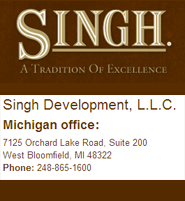|
|
|
|
|
|
New York is a state in the Mid-Atlantic and Northeastern regions of the United States, and is the country's third most populous state. The state is bordered by New Jersey, and Pennsylvania to the south, Connecticut, Massachusetts and Vermont to the east. The state has a water border with Rhode Island off the east coast of Long Island, as well as an international border with the Canadian provinces of Quebec and Ontario to the northwest. New York is often referred to as New York State to distinguish it from New York City.
New York City, which is the largest city in the United States, is known for its history as a gateway for immigration to the United States and its status as a financial, cultural, transportation, and manufacturing center. It was named after the 17th century Duke of York, James Stuart, future James II and VII of England and Scotland.
New York was inhabited by the Algonquin, Iroquois, and Lenape Native American groups at the time Dutch and French nationals moved into the region in the early 17th century. First claimed by Henry Hudson in 1609, the region came to have Dutch forts in Fort Orange, near the site of the present-day capital of Albany in 1614 and was colonized by the Dutch in 1624, at both Albany and Manhattan; it later fell to British annexation in 1664. About one third of all of the battles of the Revolutionary War took place in New York. New York became an independent state on July 9, 1776 and enacted its constitution in 1777. The state ratified the United States Constitution on July 26, 1788 to become the 11th state. According to the US Department of Commerce, it is also the state of choice for foreign visitors, leading both Florida and California in tourism.
During the 17th century, Dutch trading posts established for the purchase of pelts from the Iroquois and other tribes expanded into the colony of New Netherlands. The first of these trading posts were Fort Nassau (1614, near present-day Albany); Fort Orange (1624, on the Hudson River just south of nowadays city of Albany (to replace the already mentioned Fort Nassau), developing into settlement Beverwijck (1647), and into nowadays Albany); Fort Amsterdam (1625, to develop into the town New Amsterdam which is present-day New York City); and Esopus, (1653, now Kingston). The British captured the colony during the Second Anglo-Dutch War and governed it as the Province of New York. Agitation for independence during the 1770s brought the American Revolution.
New York has many state parks and two major forest preserves. Adirondack Park, roughly the size of the state of Vermont and the largest state park in the United States, was established in 1892 and given state constitutional protection in 1894. The thinking that led to the creation of the Park first appeared in George Perkins Marsh's Man and Nature, published in 1864. Marsh argued that deforestation could lead to desertification; referring to the clearing of once-lush lands surrounding the Mediterranean, he asserted "the operation of causes set in action by man has brought the face of the earth to a desolation almost as complete as that of the moon."
The Catskill Park was protected in legislation passed in 1885,which declared that its land was to be conserved and never put up for sale or lease. Consisting of 700,000 acres (2,800 km²) of land,the park is a habitat for bobcats, minks and fishers. There are some 400 black bears living in the region. The state operates numerous campgrounds and there are over 300 miles (480 km) of multi-use trails in the Park.
New York has one of the most extensive and one of the oldest transportation infrastructures in the country. Engineering difficulties because of the terrain of the state and the unique issues of the city brought on by urban crowding have had to be overcome since the state was young. Population expansion of the state generally followed the path of the early waterways, first the Hudson River and then the Erie Canal. Today, railroad lines and the New York State Thruway follow the same general route. The New York State Department of Transportation is often criticized for how they maintain the roads of the state in certain areas and for the fact that the tolls collected along the roadway have long passed their original purpose. Until 2006, tolls were collected on the Thruway within The City of Buffalo. They were dropped late in 2006 during the campaign for Governor (both candidates called for their removal).
In addition to New York City's famous mass transit subway, four suburban commuter railroad systems enter and leave the city, including the Long Island Rail Road, MTA Metro-North, the PATH system and five of NJTransit's rail services. Many of the other cities have urban and regional public transportation. Buffalo also has a Subway line, sometimes called a Lightrail System run by the NFTA, and Rochester had a subway system, although it is mostly destroyed. Only a small part exists under the old Erie Canal Aqueduct.
Portions of the transportation system are intermodal, allowing travelers to easily switch from one mode of transportation to another. One of the most notable examples is AirTrain JFK which allows rail passengers to travel directly to terminals at John F. Kennedy International Airport.
There have been at least six United States Navy ships named USS New York in honor of the state. The keel was laid for the USS New York (LPD 21) on September 10, 2004 and she will be the seventh US Navy ship to be named for the state. The New York's motto will be "Never Forget."
The USS New York is one of the San Antonio-class of amphibious transport dock ships (LPD stands for Landing Ship Transport, Dock). The ship will be used to transport and land Marines, their equipment and supplies, such as amphibious vehicles and helicopters. It is one of three similar ships being given names that are associated with September 11. The others are the LPD 24 USS Arlington and the LPD 25 USS Somerset.
Twenty-four tons of steel from the World Trade Center were recycled for construction of the ship. Approximately seven tons were used, reverently, to make the bow section of the ship's hull.
|
|
|




|
|
|
|
|